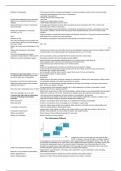Summary
Summary Edexcel IGCSE Geography Ch6- Urban Environments Flashcards - Google Sheets
- Course
- Institution
- Book
This is a mark scheme based set of flashcards aiming to give you a comprehensive understanding of Edexcel IGCSE Geography Ch6- Urban Environments
[Show more]



